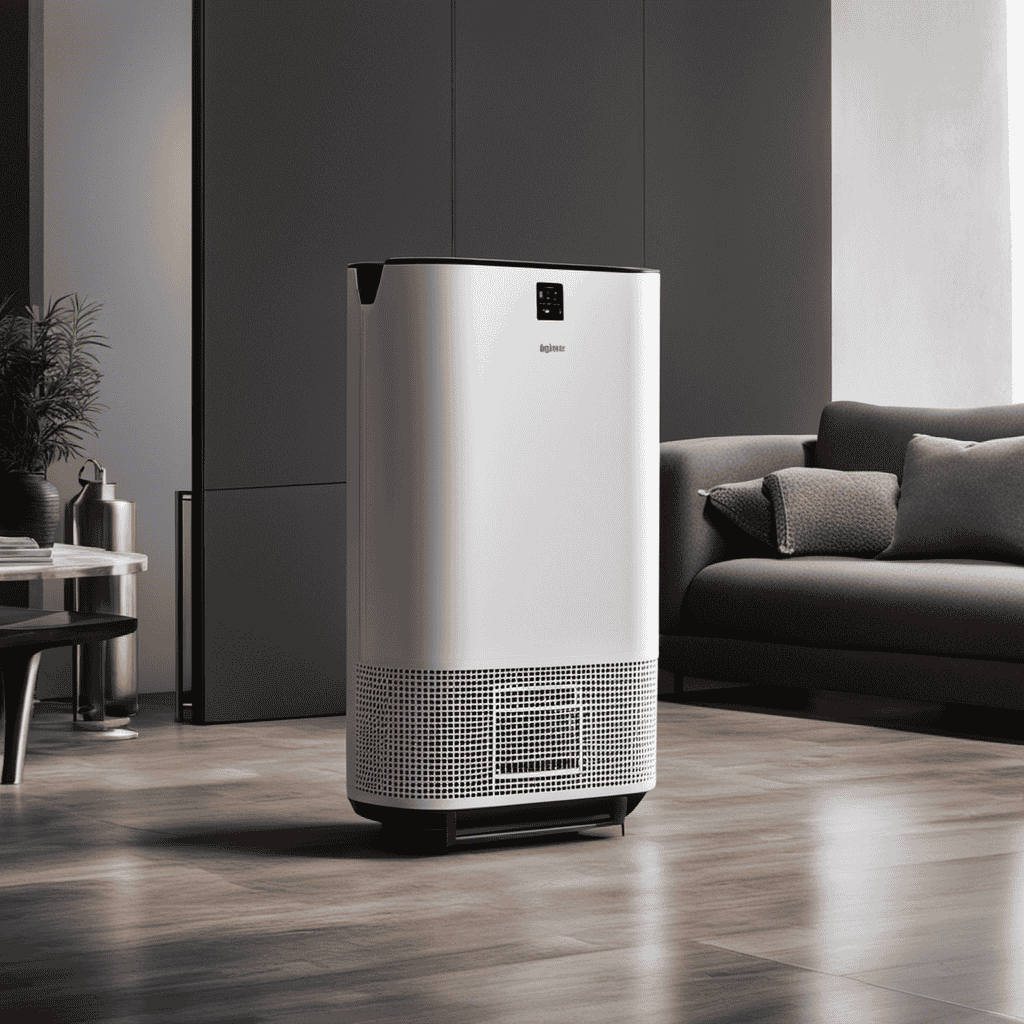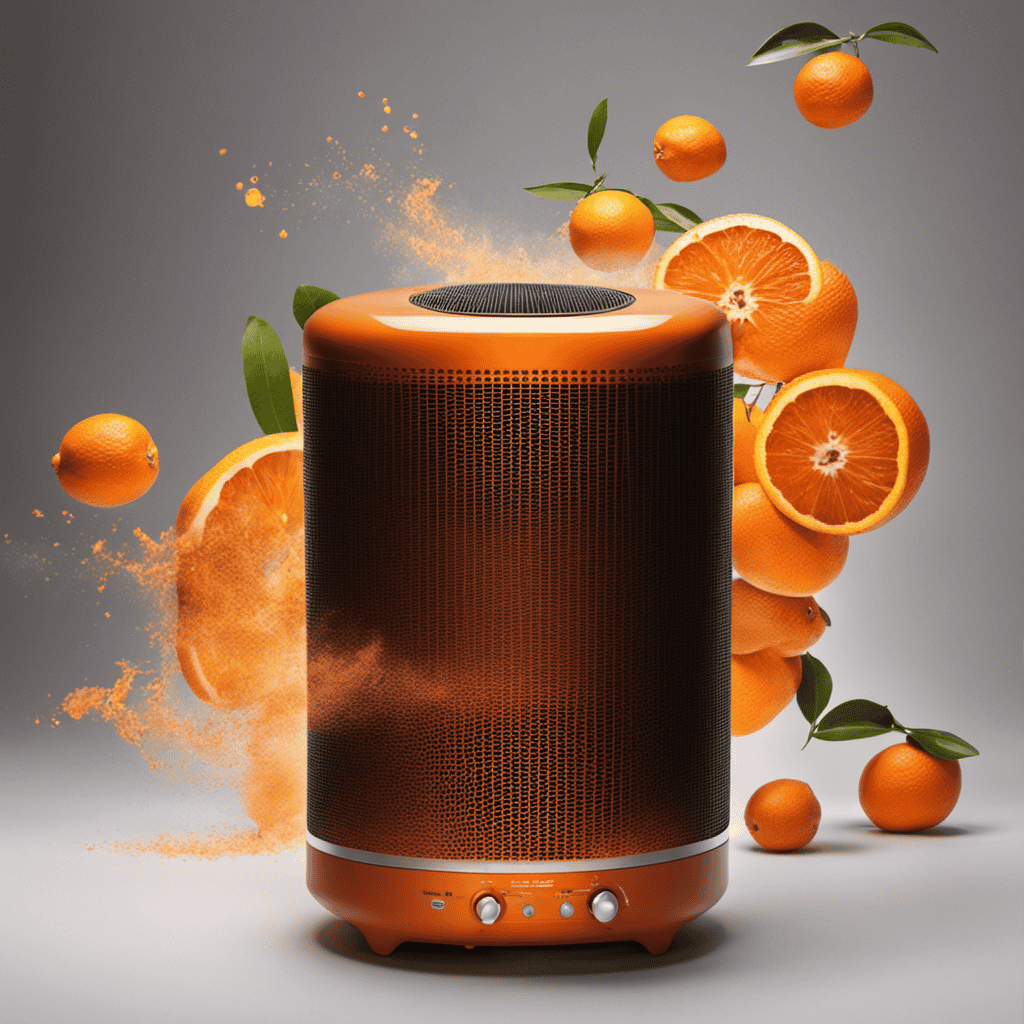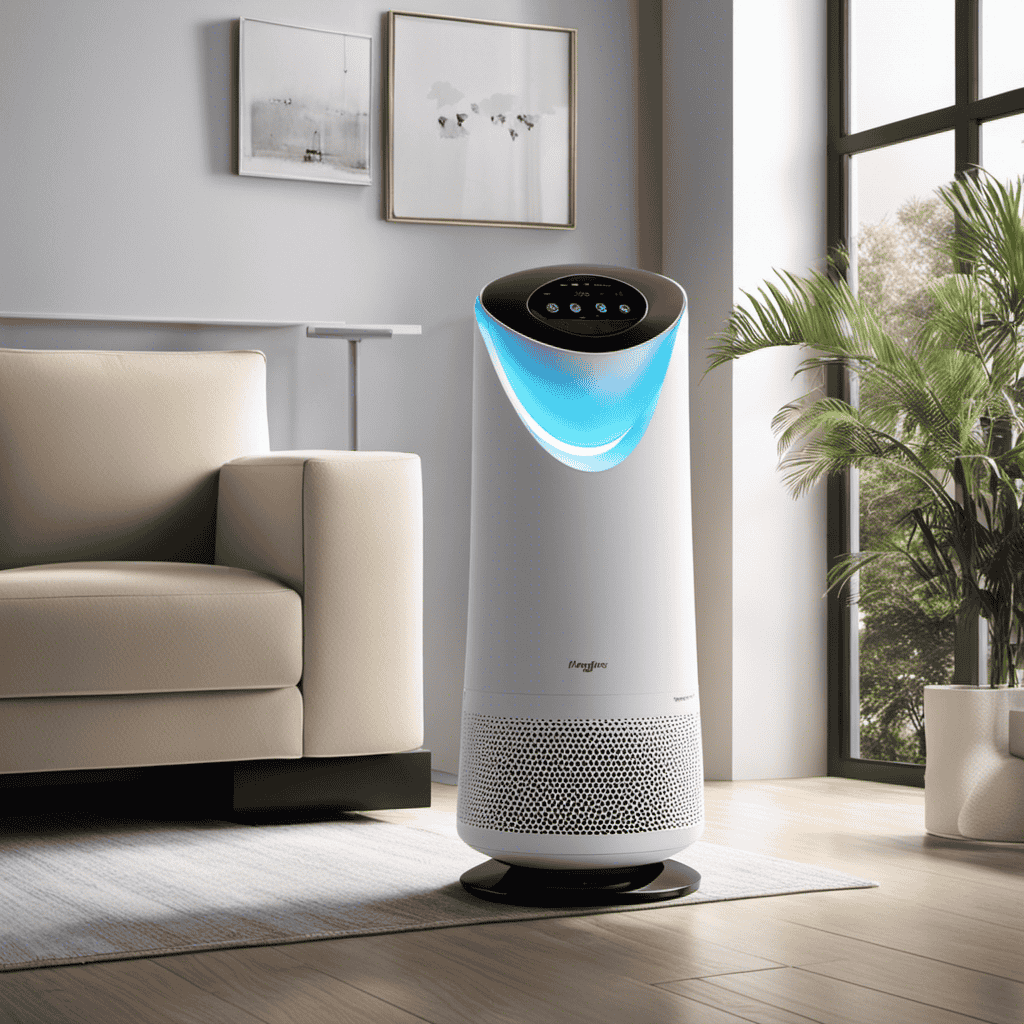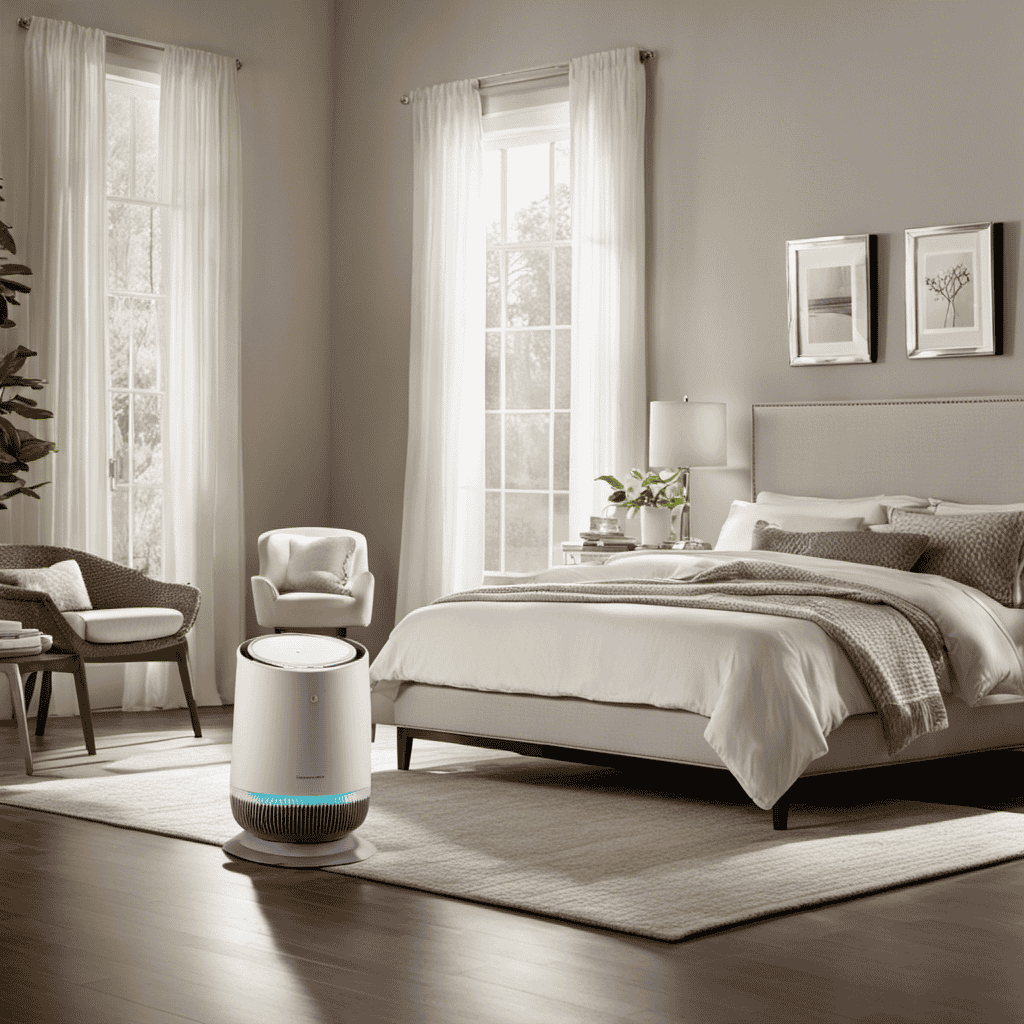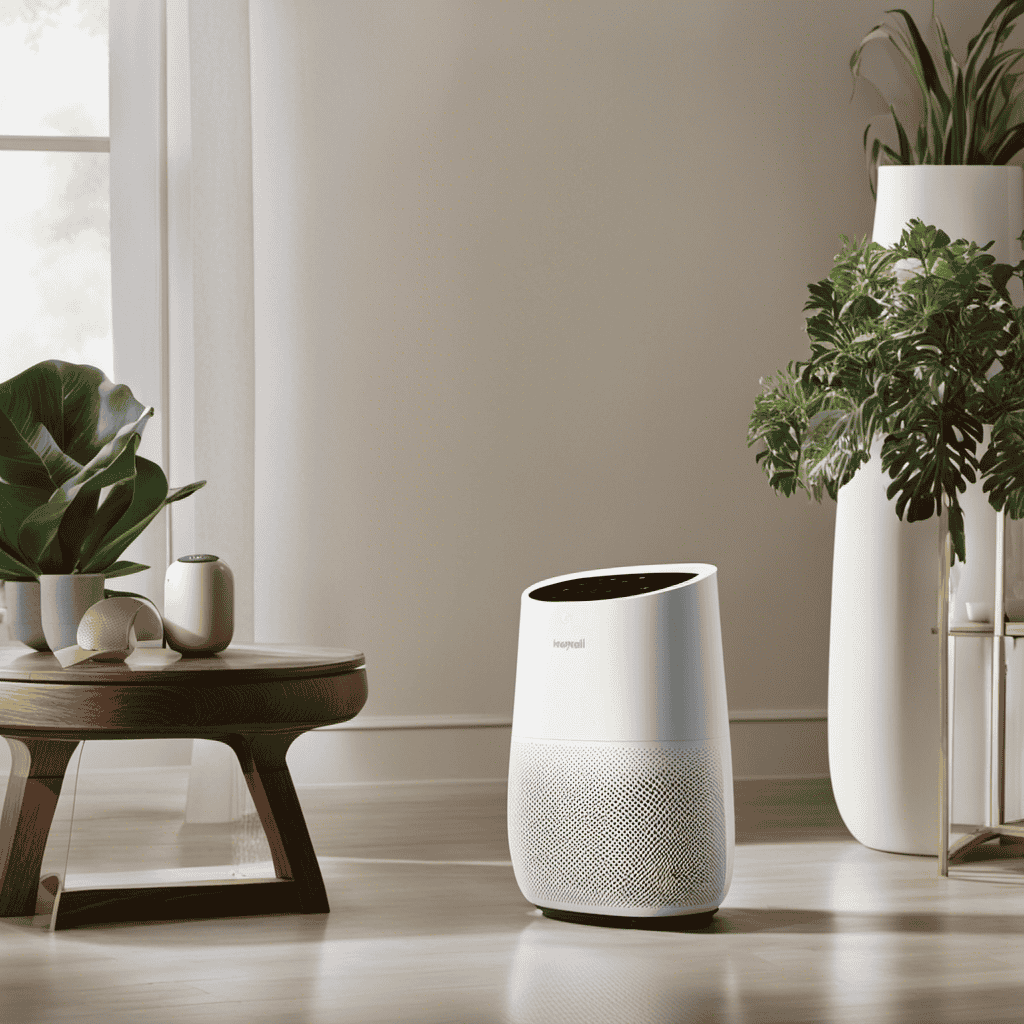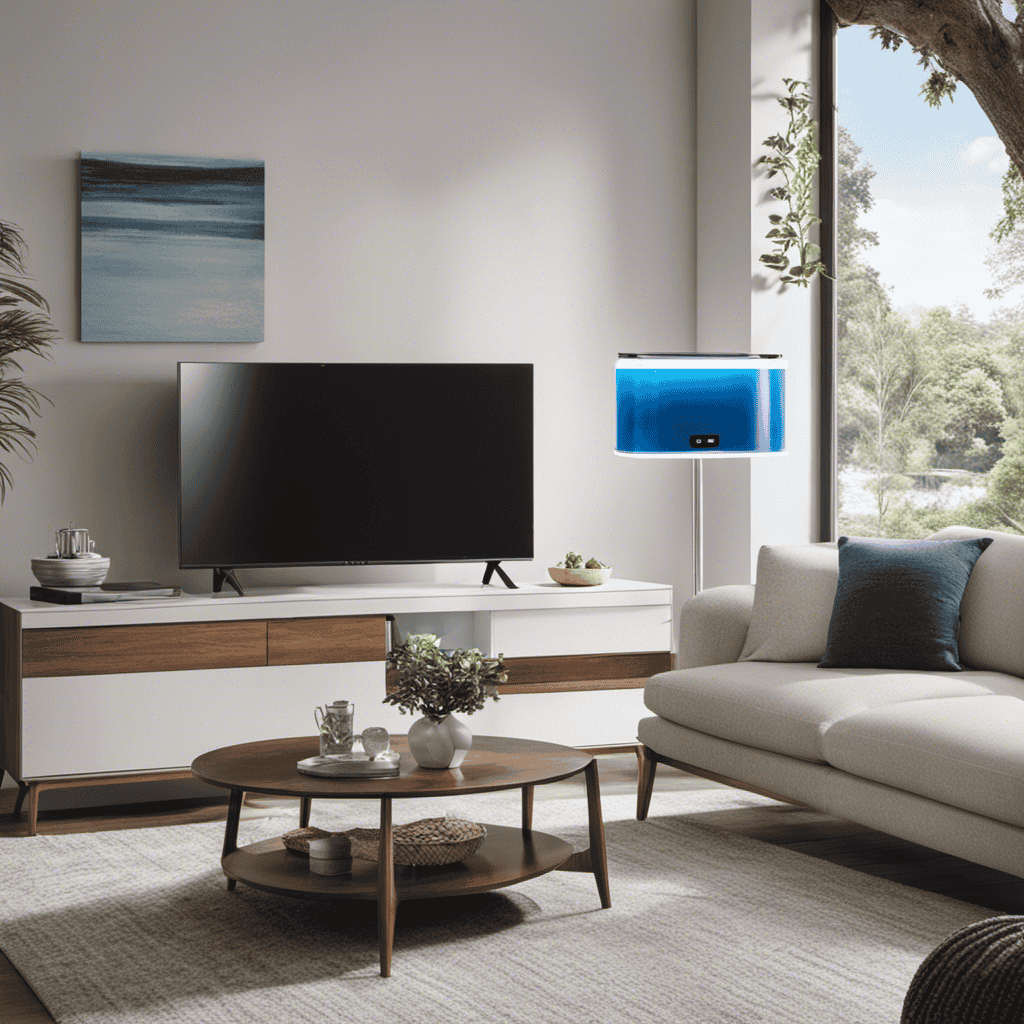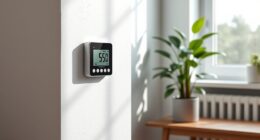As someone who is passionate about air purifiers, I frequently emphasize the significance of replacing the filter to keeping a well-oiled machine. Just as a car requires routine tune-ups to operate efficiently, the same goes for your air purifier.
In this article, I will delve into the factors that determine how frequently you should change your air purifier filter. From recommended lifespan based on usage to signs indicating it’s time for a replacement, I will provide you with the technical knowledge you need to optimize your air quality.
Key Takeaways
- Recommended filter replacement intervals vary based on type and manufacturer’s guidelines
- Factors like pet dander, smoke, and pollen can impact filter lifespan
- Regularly checking filter’s condition is important for optimal performance
- Regular maintenance tasks can extend filter lifespan
Factors to Consider When Determining Filter Replacement Frequency
When determining how often to change the filter on your air purifier, there are several factors you should consider.
The recommended filter replacement intervals vary depending on the type of filter you have and the manufacturer’s guidelines. Generally, it is recommended to replace the filter every 3 to 6 months, but this can vary based on factors affecting filter effectiveness.
One important factor is the air quality in your environment. If you live in an area with high levels of pollution or have pets that shed a lot of hair and dander, you may need to change the filter more frequently.
Additionally, the size of your air purifier and the level of usage can also affect how often the filter needs to be replaced.
It is important to regularly check the filter’s condition and follow the manufacturer’s recommendations to ensure optimal performance of your air purifier.
Recommended Filter Lifespan Based on Air Purifier Usage
When it comes to maintaining optimal air quality in your home, understanding the filter replacement frequency and the factors that affect filter lifespan is crucial.
The frequency at which you should replace your air purifier filter depends on various factors such as the type of filter, the air quality in your area, and the usage of the air purifier.
Additionally, factors like pet dander, smoke, and pollen can significantly impact the lifespan of your filter, requiring more frequent replacements.
Optimal Filter Replacement Frequency
The optimal frequency for replacing the filter on an air purifier is typically determined by the manufacturer’s recommendations. However, there are several factors that can affect the efficiency of the filter and ultimately impact its lifespan.
-
Air Quality: The quality of the air being filtered plays a significant role in how quickly the filter becomes dirty and less effective. If you live in an area with poor air quality, such as near a busy road or industrial area, you may need to replace the filter more frequently.
-
Filter Type: Different types of filters have varying levels of efficiency and may require replacement at different intervals. HEPA filters, for example, are highly effective but may need to be replaced more frequently.
-
Usage: The amount of time the air purifier is running and the volume of air it is filtering can also impact the lifespan of the filter. If the air purifier is running constantly or in a high-traffic area, the filter may become clogged more quickly.
-
Maintenance: Regular maintenance, such as cleaning and vacuuming the filter, can extend its lifespan and improve its efficiency. Neglecting maintenance tasks can lead to a shorter filter lifespan.
Considering these factors, it is important to follow the manufacturer’s recommendations and be aware of the specific conditions in your environment to determine the optimal frequency for replacing the filter on your air purifier.
Factors Affecting Filter Lifespan
Living in an area with poor air quality may require you to replace the filter on your air purifier more frequently. There are several factors that can affect the lifespan of an air purifier filter and its efficiency in capturing and removing airborne particles. By understanding these factors, you can make informed decisions to prolong the filter’s lifespan and ensure optimal performance of your air purifier.
| Factors Affecting Filter Efficiency | Prolonging Filter Lifespan |
|---|---|
| Type of air pollutants | Regular cleaning |
| Air purifier usage habits | Proper maintenance |
| Indoor air quality | Timely filter replacement |
| Filter quality and design | Avoiding excessive dust |
Signs That Indicate It’s Time to Change the Air Purifier Filter
As an air purification expert, I have encountered many cases where homeowners have experienced issues with clogged filters and unpleasant odors lingering in their homes.
These two key points are often indicators that it is time to change the air purifier filter. When a filter becomes clogged, it restricts airflow and reduces the effectiveness of the air purifier, leading to poor air quality and potential health risks.
Additionally, unpleasant odors that persist even after the air purifier has been running for a while can be a sign that the filter is saturated and no longer able to effectively remove odors from the air.
Clogged Filter Warning
If you don’t replace the clogged filter soon, your air purifier won’t work efficiently. To prevent filter clogging and prolong the filter lifespan, here are some important tips to follow:
-
Regularly clean the pre-filter: This helps trap larger particles and prevents them from reaching the main filter.
-
Vacuum the surrounding area: Dust and debris can accumulate near the purifier, increasing the chances of clogging the filter.
-
Avoid smoking indoors: Smoke particles are small and can quickly clog the filter, reducing its effectiveness.
-
Keep the air purifier away from pets: Pet hair and dander can easily get sucked into the filter, causing it to clog faster.
Unpleasant Odors Lingering?
Are you noticing unpleasant odors that just won’t go away? Don’t worry, I’ve got some filter maintenance tips to help you deal with persistent odors. One of the common causes of lingering odors is a dirty or clogged air filter. Regularly cleaning or replacing your air purifier’s filter is essential for maintaining its effectiveness in removing odors and improving indoor air quality.
To ensure your air purifier is working at its best, follow these filter maintenance tips:
| Tip | Frequency |
|---|---|
| Clean reusable filters | Every 2-3 months |
| Replace disposable filters | Every 6-12 months |
| Check filter indicator light | As recommended by the manufacturer |
Cleaning or replacing your air purifier’s pre-filter is especially important in eliminating odors. Pre-filters trap larger particles, such as pet hair and dust, and can become a breeding ground for bacteria and mold that contribute to unpleasant smells.
Now that you know how to deal with persistent odors, let’s move on to discussing how often you should clean or replace pre-filters in air purifiers.
How Often to Clean or Replace Pre-Filters in Air Purifiers
You should clean or replace the pre-filters in your air purifier regularly to maintain its efficiency. Pre-filters are an essential component of air purifiers, as they trap larger particles like dust, pet hair, and pollen, preventing them from clogging the main filters.
Here are some guidelines on how often to clean or replace pre-filters:
-
Check the manufacturer’s instructions: They usually provide recommendations on cleaning or replacing pre-filters based on usage and air quality.
-
Visual inspection: If you notice a significant buildup of dirt or debris on the pre-filter, it’s time to clean or replace it.
-
Air quality indicators: Some air purifiers have sensors that detect air quality levels. If the indicator shows poor air quality, consider cleaning or replacing the pre-filter.
-
Time frame: As a general rule, cleaning or replacing the pre-filter every three to six months is a good practice.
Understanding the importance of maintaining clean filters for optimal air quality is crucial. By regularly cleaning or replacing pre-filters, you ensure that your air purifier continues to effectively remove airborne pollutants, providing you with cleaner and healthier air to breathe.
Understanding the Importance of Maintaining Clean Filters for Optimal Air Quality
When it comes to maintaining clean filters for optimal air quality, there are several factors that can affect the effectiveness of air purifier filters.
One common misconception is that filters only need to be replaced when they are visibly dirty. However, the truth is that filters can become clogged with pollutants, allergens, and other particles even when they appear clean.
Factors such as the size of the room, the level of air pollution, and the type of filter used can all impact how frequently the filter needs to be changed.
It is important to follow the manufacturer’s recommendations for filter replacement and to regularly monitor the filter’s condition.
The Impact of Filter Type on Replacement Frequency
The impact of filter type on how often they need to be replaced can vary depending on factors such as the level of air pollution and the size of the room. Different filter types have varying efficiencies in capturing pollutants, which directly affects their lifespan.
Here are some important points to consider when it comes to the impact of filter quality on replacement frequency:
-
HEPA filters: Highly efficient at capturing particles as small as 0.3 microns, they have a longer lifespan compared to other filters.
-
Carbon filters: Effective in removing odors and harmful gases, but they may need to be replaced more frequently due to their smaller particle capture size.
-
Electrostatic filters: These can attract and trap particles through an electric charge, but they may require more frequent cleaning to maintain their effectiveness.
-
Pre-filters: These are the first line of defense, capturing large particles and extending the lifespan of the main filter.
Choosing the right filter type can have a significant impact on not only the quality of air but also the cost of filter replacements. It is essential to consider both the effectiveness and the long-term maintenance costs when selecting a filter for your air purifier.
Tips for Extending the Lifespan of Your Air Purifier Filter
Now that we understand the impact of filter type on replacement frequency, let’s explore some tips for extending the lifespan of your air purifier filter. By following these maintenance tips, you can prolong the effectiveness of your filter and reduce the frequency of replacements.
Firstly, regularly clean the pre-filter to remove large particles and debris. This will prevent them from clogging the main filter and ensure optimal airflow. Additionally, vacuum or wipe down the exterior of the air purifier to remove any dust or dirt buildup.
Secondly, monitor the air quality in your home and adjust the fan speed accordingly. Running the air purifier on high when the air quality is already good will put unnecessary strain on the filter.
Lastly, consider using a filter indicator or timer to keep track of the filter’s usage and change it when necessary. This will ensure that you don’t forget to replace the filter at the appropriate time.
Frequently Asked Questions
What Are the Benefits of Using an Air Purifier?
Using an air purifier has many benefits, including effective air purification. It helps to remove pollutants, dust, and allergens from the air, improving indoor air quality and reducing the risk of respiratory issues.
Can I Use a Different Brand of Filter in My Air Purifier?
Yes, you can use a different brand of filter in your air purifier. However, it is recommended to use the manufacturer’s recommended filter to ensure optimal performance and avoid common air purifier problems.
Can I Wash and Reuse My Air Purifier Filter?
No, air purifier filters are not designed to be washed and reused. It is recommended to replace the filter according to the manufacturer’s instructions. Alternative filter options should be compatible with the specific air purifier model.
How Do I Clean the Exterior of My Air Purifier?
When cleaning the exterior of my air purifier, I recommend using a soft cloth and mild detergent. Avoid harsh chemicals that may damage the surface. Regular cleaning will help maintain the efficiency of the purifier.
Can I Use My Air Purifier in Multiple Rooms?
Yes, you can use your air purifier in multiple rooms. It is important to consider the size of the rooms and the recommended coverage area of your specific air purifier. Regular air purifier maintenance, including filter changes, is crucial for optimal performance. Some of the best air purifier brands offer filters that need to be changed every 6 to 12 months.
Conclusion
In conclusion, maintaining clean filters is crucial for ensuring optimal air quality in your home. By understanding the factors that determine filter replacement frequency and following the recommended lifespan based on your air purifier usage, you can ensure that you are breathing in clean and fresh air.
Remember, a stitch in time saves nine, so don’t neglect the signs that indicate it’s time to change your air purifier filter. By taking care of your filters and following these tips, you can extend their lifespan and enjoy cleaner air for longer.
